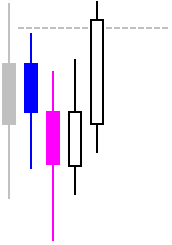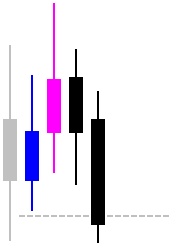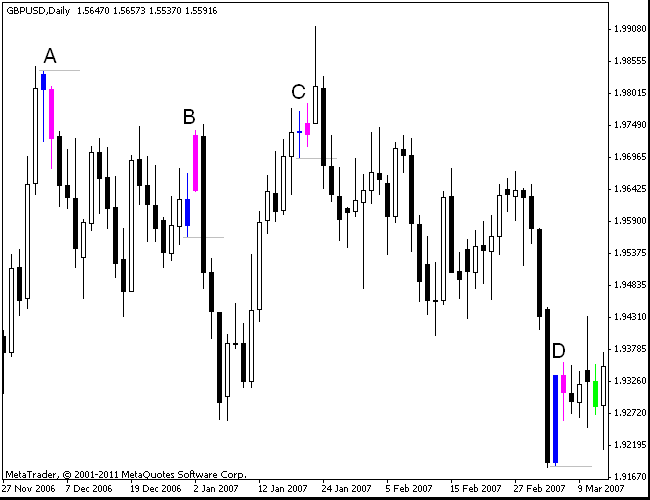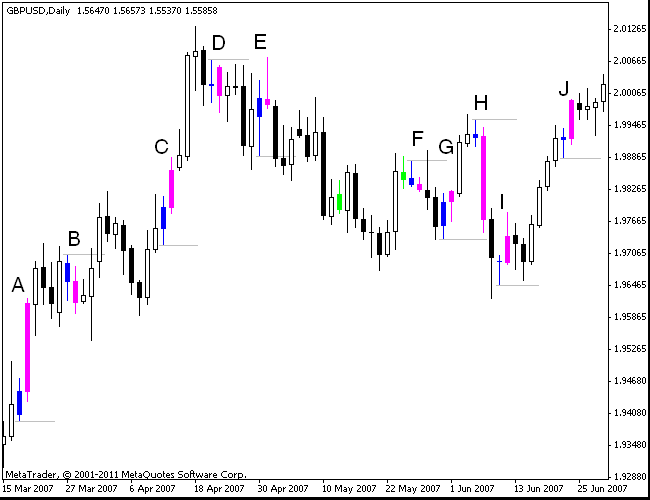Hikkake Chart Pattern
Introduction to hikkake
If you read Diary of a Professional Commodity Trader by Peter Brandt, among other good things, you would find a mention of a hikkake pattern there. Hikkake is often called a Japanese candlestick pattern, but in reality, it can be used with the common bar chart too as it doesn't rely on the Open and Close levels.
Hikkake was first described by a famous commodities trader, Daniel Chesler, in an April 2004 article in the Active Trader magazine. Hikkake, translated from Japanese, means "to trap" or "to ensnare". It is a false breakout pattern that tries to work out the failed inside day pattern. It is both a continuation and reversal pattern in terms that it can be met inside a bullish/bearish trend and offer a buy/sell trade opportunity; it can also be met inside a bullish/bearish trend and offer a sell/buy trade opportunity.
Hikkake details
The pattern consists of two bars (though the first one also relies on the previous bar). The first bar (the blue one, on the images below) is the inside bar — its high should be lower than the previous bar's high and its low should be higher than the previous bar's low. The second bar (magenta) should have either higher high and higher low for a bearish hikkake or lower low and lower high for a bullish hikkake. These two bars offer a hikkake setup, which is triggered if any one of the next three bars breaks through the high of the inside bar (for a bullish hikkake) or through its low (for a bearish hikkake):
Bullish hikkake pattern | Bearish hikkake pattern |
 |
 |
The patterns shown above demonstrate a breakout line (dashed), which is violated by the second bar after the pattern is completed, triggering trading signals.
As you see on the chart, the direction of the bars (the Open/Close relation) doesn't matter. Hikkake pattern is particularly good for Forex traders because it doesn't take into account the Open/Close levels of the candles. This offers unspoiled performance in the foreign exchange market, which closes and opens only once a week.
Trading
A trading strategy involving the hikkake pattern is evident from the above examples. A trader sets up a pending stop entry order near the inside bar's high or low. The
Hikkake trading examples
Let's look at some real life examples of the hypothetical hikkake trades. The inside bars are colored blue, the second hikkake bars are colored magenta. Bright green bars are the inside bars that weren't followed by a higher high + higher low or lower low + lower high bars and thus didn't form a valid hikkake.
The examples shown on the first chart are from the November 2006 — March 2007 period. Those aren't some

The second chart shows examples from the

Conclusion
Hikkake is far from being a
If you have any questions or comments regarding the hikkake chart pattern, you can discuss it on our Forex forum.
If you want to get news of the most recent updates to our guides or anything else related to Forex trading, you can subscribe to our monthly newsletter.